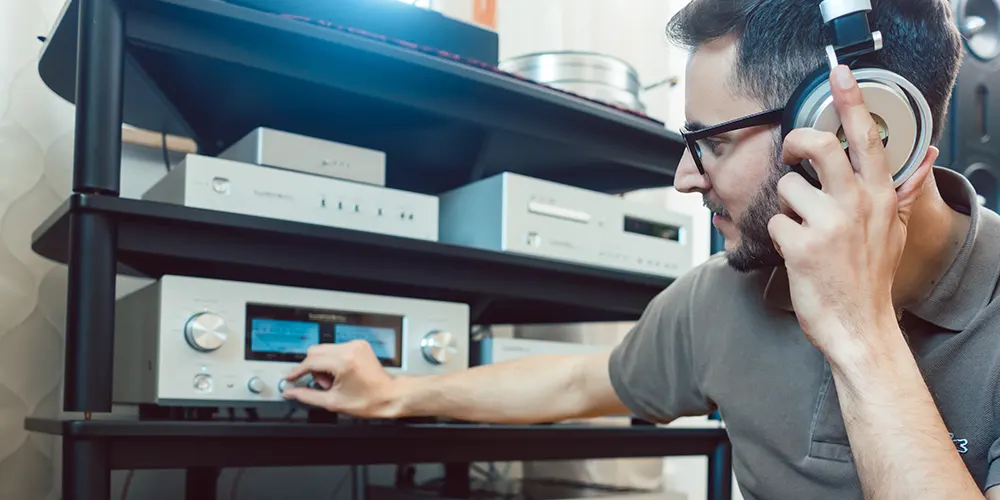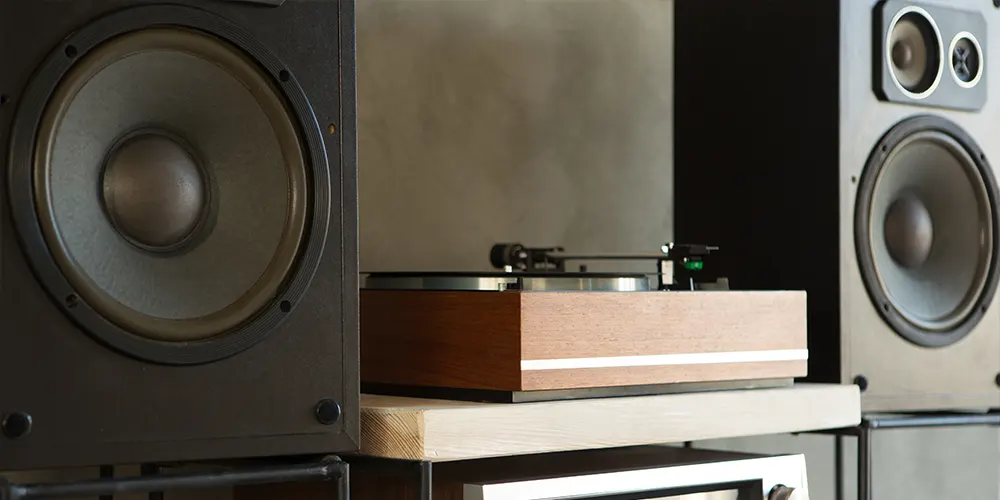
What's the best sound system? It depends on the audiophile you're speaking to; no one will speak poorly of their system, and this includes owners of modern or vintage turntables. You've probably heard the debate that older record players are superior due to sturdy craftsmanship alongside the nostalgia factor, or that the newest turntable models have unparalleled precision. Do you feel drawn to the old or new, are you unsure? Our team at SounDesign will lay out the differences between the two so you can choose a record player that best matches your listening preferences.
You can find a record player of just about any shape or size, and their physical appearance differs more between brands than decades. However, most older turntables are significantly larger than new ones. This is due to a built-in pre-amp that many users found to be too bulky as the years progressed. As companies slimmed down the size, we've reached modern setups that are sleek and easily transportable. A popular modern turntable design appears like a suitcase when closed and is lightweight enough to easily be moved around your space.

Audio quality has evolved. The 1900s witnessed the booming popularity of the gramophone, and different companies swiftly rose to the challenge to create the model with the best sound quality. A well-made vintage turntable will still emit superior audio to that of an inexpensive modern setup. However, the state of your record player will determine the sound quality no matter its age. Be wary of substandard styluses with rough exteriors that will alter your audio over time and permanently damage your record. We highly recommend you test your equipment before playing your rare limited edition album. Modern stylus-cartridge combos have overall improved audio quality and durability.
Although this might seem an obvious comparison, new technologies have advanced audio quality in record players as the decades passed. A classic setup is relatively bare-bones when you look at the bells and whistles available in modern models. However, many casual listeners may prefer to not deal with those extra buttons and switches and opt for a more straightforward musical experience. Another factor to consider: while many audiophiles enjoy that modern turntables have a silent motor to achieve a more crisp sound, some listeners enjoy hearing the soft whir as the deck spins on vintage setups. It truly depends if you're one to opt for simple nostalgic versus extravagant novelty.

If you take care of your record player, it's likely to operate smoothly for as long as you own it. However, in case of a careless hand, a fall from a table, or a liquid spill, you'll need to get it fixed. Most vintage turntables are built with durability in mind and don't easily break, but their parts are incredibly difficult to source considering they may no longer be manufactured. For example, if you have a vintage model older than the 1960s, you'll find it nearly impossible to repair. On the other hand, modern record players are still relatively durable, and if you damage your setup, it's easy to take it to a store or contact the company to replace your broken pieces.
Prices will vary wildly no matter the age of your turntable; it truly depends on its quality. A high-quality vintage model may cost about $300, accurately reflecting the former owner's maintenance throughout time. If the deal feels too good to be true, it will probably damage your vinyl. However, $300 is a great deal for a piece of equipment with years of history. On the other hand, if you find a modern turntable for $300, you can expect a short lifespan and basic features. Anything new for under $200 is sure to destroy your records within a few years. A high-quality contemporary design will go for around $1,000 which is well worth the investment for professional performers and serious audiophiles who want a listening experience that feels out of this world. No matter how pricey your record player is, don't forget you'll still need to purchase speakers and an amplifier. Be sure to factor in their quality and costs as well.

We recommend you consider the purpose of your turntable before purchasing, as they are built with specific details to achieve different purposes. Vintage stereos are easier to operate due to fully automated simple settings. Before you play an album, check the vinyl for suggested RPM, adjust as written, and you're good to go! However, many high-quality modern models will need you to manually lift the platter and adjust multiple features before you begin listening. You'll find almost nothing is even partially automated because record players that are highly complex are meant to be used by DJs and sound engineers. Although simple setups are available today, remember that your more convenient option may be a vintage model.
Whether you still feel unsure about your decade or brand, our team at SounDesign is ready to help you select an audio system that matches your lifestyle. We are excited to give recommendations, answer any questions, and even install your hi-fi stereo system with smart centralized control. Contact us today to get started!